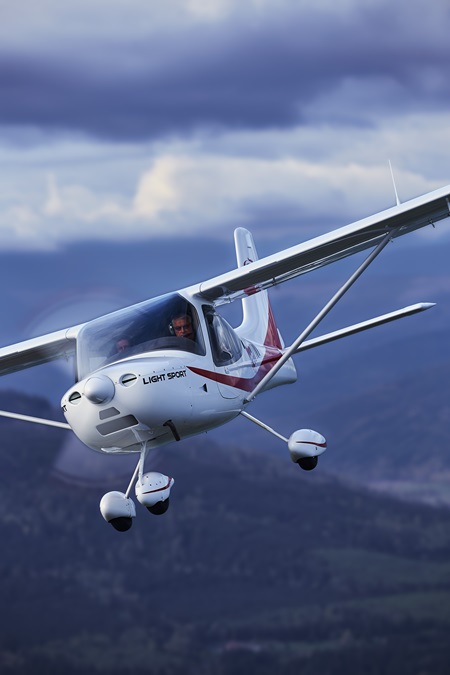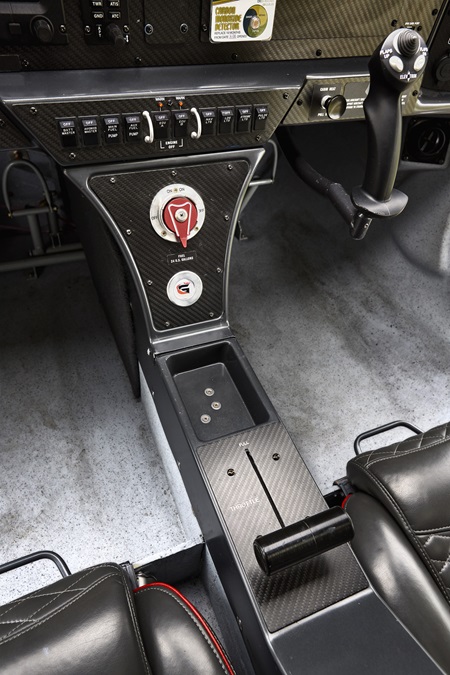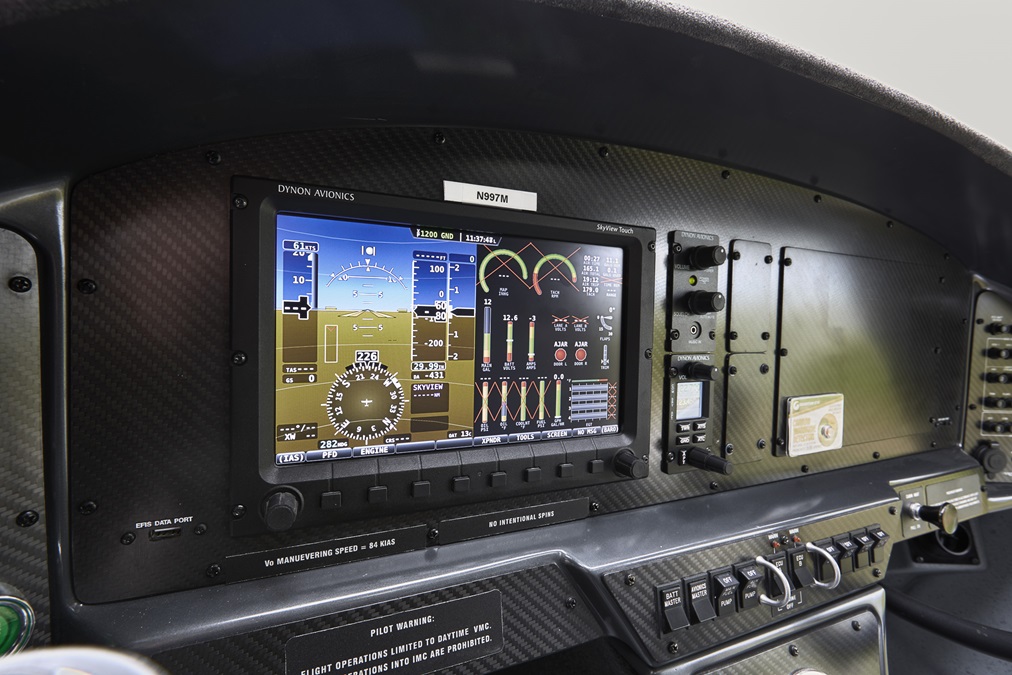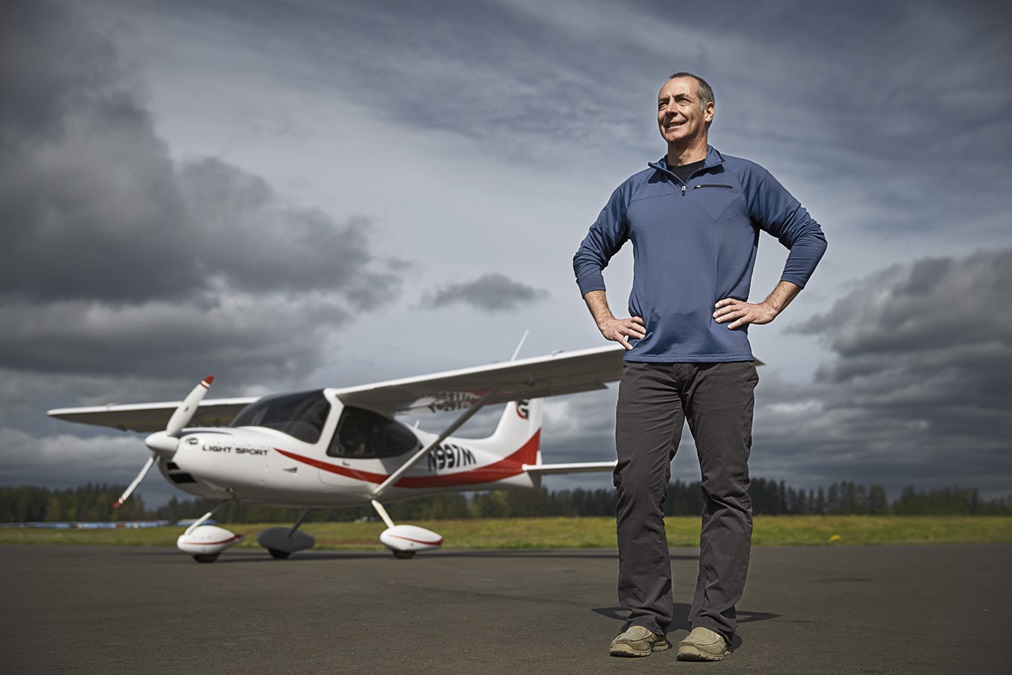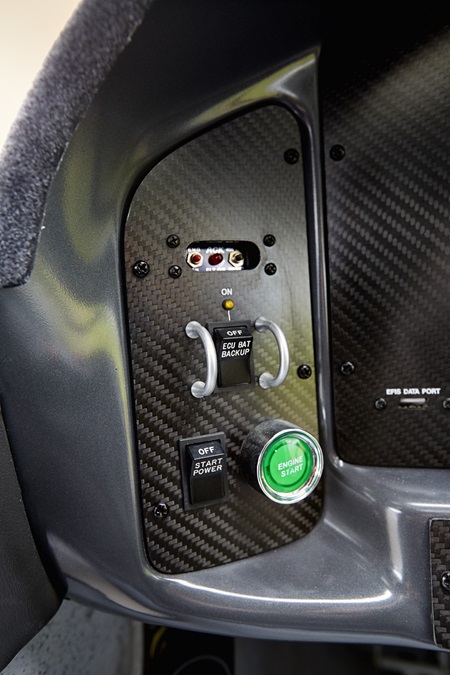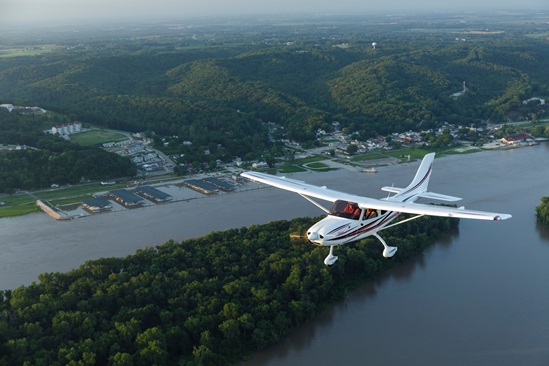Merlin leaves the nest
A kit maker turns out a factory-built LSA
On board for this flight was Ben Rauk, Glasair production manager and test pilot for this all-new design. Rauk had in past months demonstrated a landing with a 19-knot crosswind component and entered that figure into the pilot’s operating handbook for the newly approved Merlin. The wind for our test flight was only 20 degrees off the runway heading.
Descending through 100 feet and transitioning from a crab to sideslip, the Merlin held its position above the centerline in the chilly gusts. The left main wheel touched down first, with no sideways movement that would have put strain on the gear.
For an LSA, limited to a maximum weight of 1,320 pounds, the aircraft turned in an impressive performance. The landing gear likely would have sustained little strain had there been sideways movement. Glasair President Nigel Mott said robust gear was a prime consideration for the LSA, given that the airplane is aimed at the training and recreation market. A solid aluminum main gear, with a hole drilled inside the center of each leg to carry brake fluid, helps meet that goal of ruggedness.
The Merlin’s design was already complete when Glasair’s Chinese owner and investor, real estate and energy businessman Tieji Fang, indicated he had two areas of interest: There is little 100LL aviation fuel in China, so he wanted a diesel-engine aircraft, and he also wanted an entirely new aircraft. To meet the first goal, Glasair designed and flew a diesel-powered, four-place Sportsman aircraft in six months. Eight Chinese employees work in the Glasair factory, learning to build the Sportsman aircraft. As for the second goal, Mott contacted consulting engineer Chuck Hautamaki for his design, a contract was signed, and the Merlin has now been granted its Special Light Sport airworthiness certificate, becoming the company’s first factory-built aircraft. (There are as yet no plans to make the Merlin diesel powered.)
Glasair used its prototype, designed by Hautamaki as his personal aircraft, for compliance with ASTM standards for the FAA’s Special Light Sport category. That means there are things about it that the company would still like to change. Given the Light Sport rules, Glasair can easily do that.
First is the speed of slightly more than 100 knots true airspeed, as tested by AOPA Pilot. Conditions for that speed were 2,200 feet above sea level, 46 degrees Fahrenheit, and a typical cruise power setting of 5,200 engine rpm. The airplane can operate continuously at 5,500 engine rpm. The 100-horsepower Rotax 912 iS Sport engine is geared and delivers a lower rpm to the propeller. The Rotax 912 iS was the newest technology available at the time the Merlin was built, Mott said. He’d like more speed. Announced in 2013, the $149,950 airplane first flew in April 2015 and won approval in early 2016.
Glasair officials also are looking for weight savings. At the moment automobile seat rails carry the adjustable seats, but custom-made rails will be three pounds lighter. (A handle above each seat aids in seat adjustments.) Weight reductions will improve the aircraft’s current low payload of 294 pounds with full fuel. An outside engineer was brought in to see what changes would reduce weight and improve speed. Rauk admits the airplane is beefier than it needs to be in certain areas.
A bonding agent holds composite wing and horizontal stabilizer skins to aluminum spars inside each of the structures, a process that takes only two hours per wing to complete; rivets would take many times longer. An aluminum substructure was lying on a work table at the factory, ready for its composite skin, in April as technicians worked to complete a second Merlin. The Merlin is still built one at a time, but that will change. A factory is to be built in China where the Sportsman, and maybe someday Merlins, can be manufactured.
The cowling allowed too much cooling air into the engine compartment, so work-around restrictor plates were installed in the inlets. A newly designed cowling will be used for future Merlins.
Other planned improvements include a different shape for the panel and better seats. While one may be hard-pressed to find anything wrong with the current seats, Mott said he wants them to be more luxurious, in keeping with Italy’s Tecnam aircraft, the chief competitor in the Light Sport arena. He said he is reluctant to let journalists fly the year-old prototype since it is still a work in progress—even though it is approved.
Special emphasis was placed on making the aircraft docile, especially when performing aerodynamic stalls. When test flights began, the prototype had a sharp wing drop following a stall, but two corrections—the addition of a triangular stall strip on the leading edge and an arrow-shaped piece of metal mounted just above the wing at the leading edge—did the trick. The arrow-shape metal dart is called a delta wing, although it is only two inches wide, and channels a stream of air to the aileron directly behind. That column of air is small, but it keeps the aileron effective during the onset of a stall. After stalling the aircraft and then letting go, intentionally doing nothing, the airplane returned to level flight—as Rauk had predicted. The delta wing also is found on the Sportsman four-place airplane.
Although I had three flights in the airplane, one of them a 1.5-hour formation flight north of Arlington, on the third flight I still wasn’t sure without looking which white button on the control handle brought the flaps down, and which took them up. Sometimes I would nudge the switch for trim when I meant to lower the flaps. Also, throttle friction seemed a little stiff for the nearly constant setting changes needed while flying in formation. An armrest positioned above the throttle was a great aide, but to be perfect it could have used an inch or two of repositioning. That is already under consideration.
While I don’t like free-castering nosewheels, I found the Merlin’s nosewheel still allowed positive control using differential braking.
The flight controls resemble the Cessna Skycatcher, but as Glasair’s Mott told Cessna in January 2016, under the panel the side-to-side-sliding control stick uses entirely different engineering. The fact that there is no stick coming up from the floor allows easier entry for heavier and older pilots. The 45-inch cockpit width helps to accommodate those customers. The prototype has Dynon Skyview avionics, although Advanced Flight Systems AF-5500 Touch avionics are planned as standard equipment for the production model. Two are on order from a Seattle-area flight school.
Two days after approval was achieved, the whole company took the afternoon off to celebrate. It had been, in Mott’s words, “hugely challenging.
“I think I had a little more hair” when certification efforts began, said Mott. From the looks of N997M, there will be more Merlins leaving the nest in the year ahead, maybe not to kill starlings—a favorite food of the actual bird—although the Merlin did kill a few insects in midair during its April flights.
Email [email protected]

